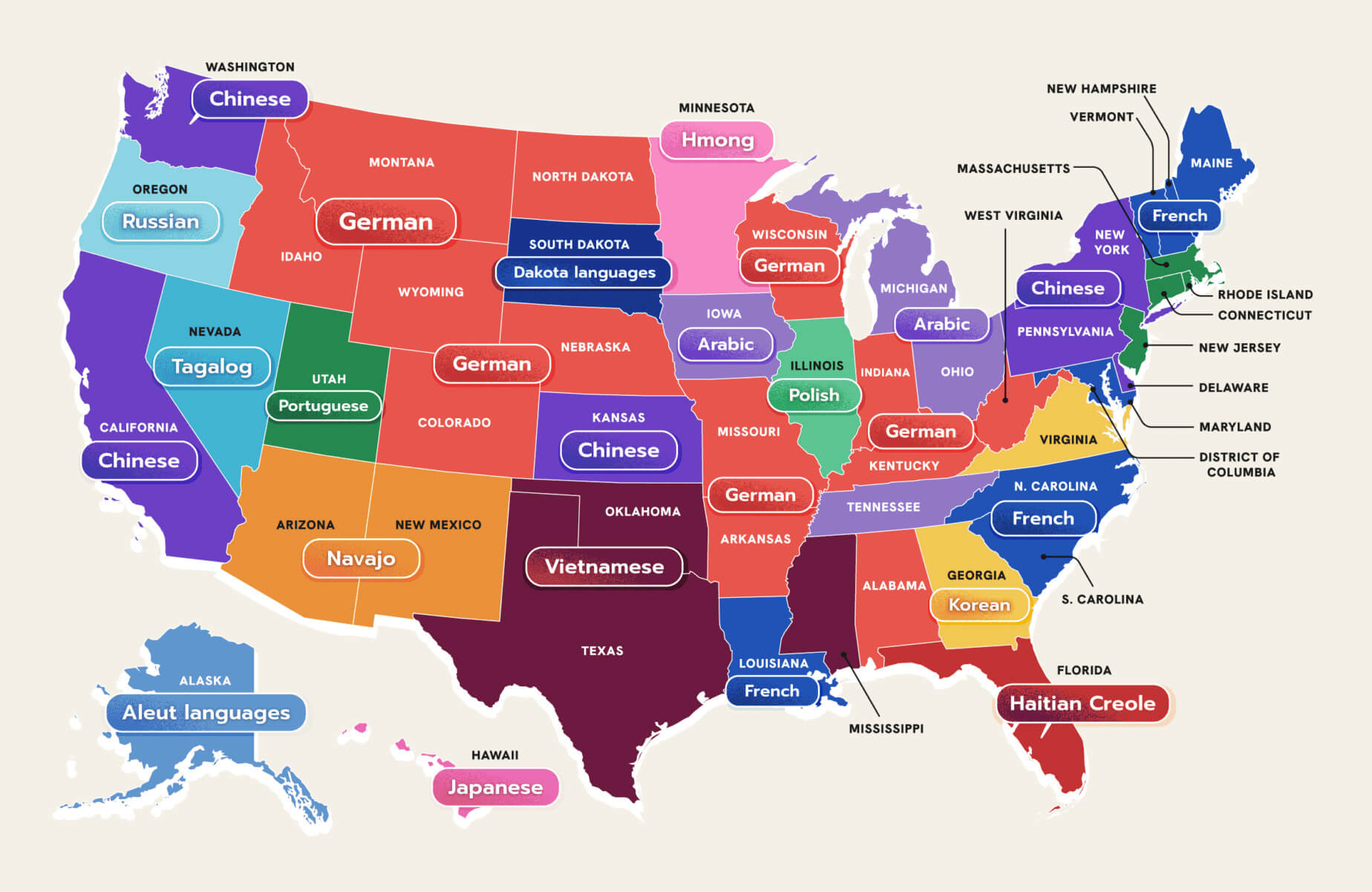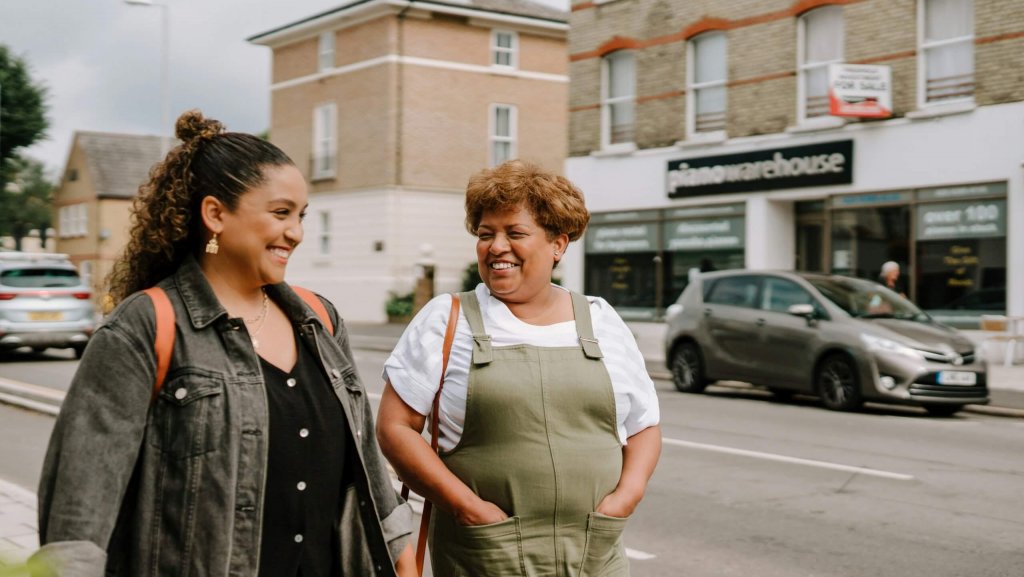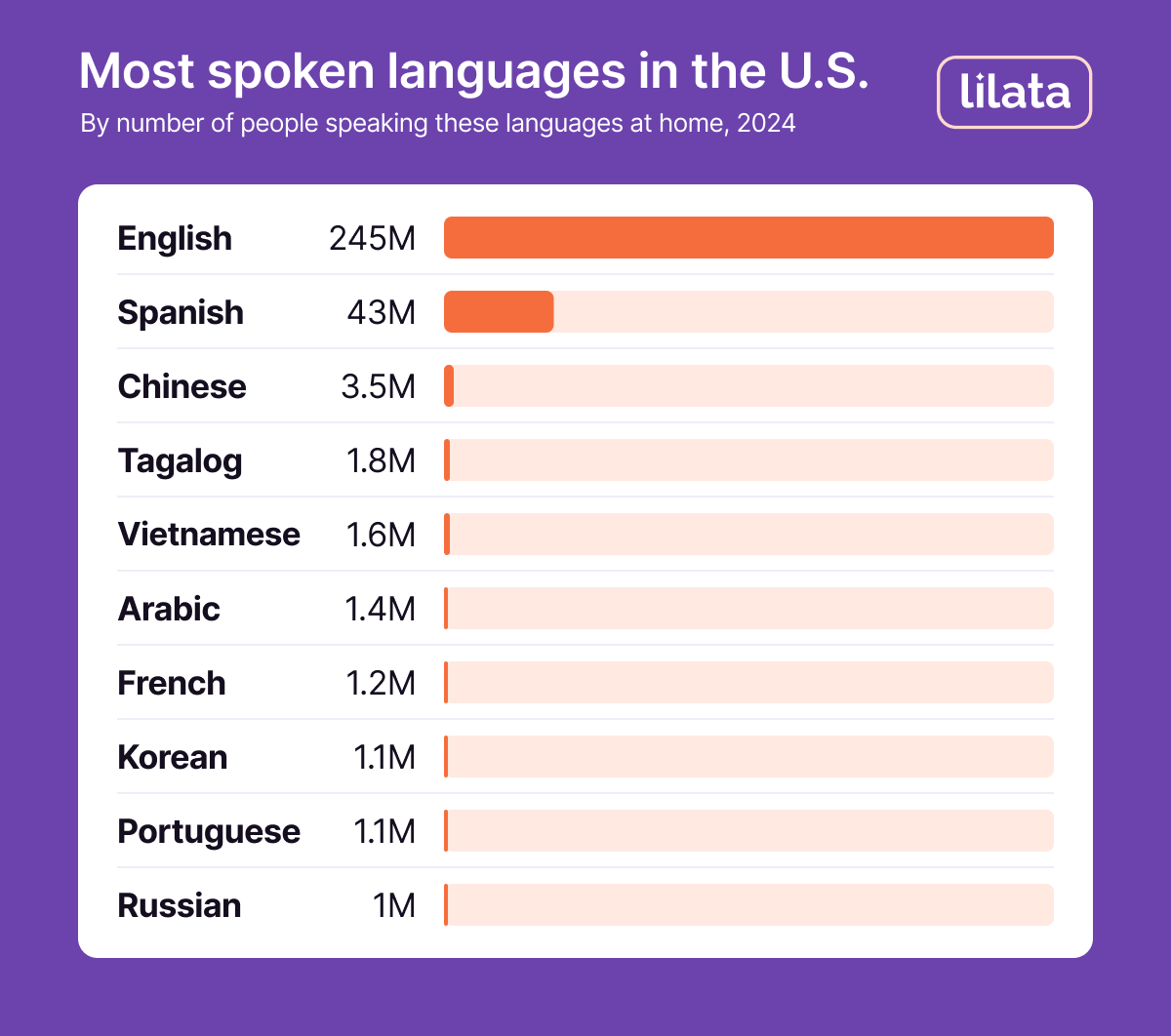

Did you know that over 350 languages are spoken in the United States? In 2019, nearly 68 million people spoke a language other than English at home — three times more than in 1980. Meanwhile, the number of people who spoke only English grew by just one-fourth, from 187 million to 241 million.
With this trend, understanding how America really communicates has never been more important. So we dug into the latest U.S. Census Bureau data to identify the most common languages spoken in the U.S. and explored where and why they thrive.
The most common languages in the U.S., ranked
English is undoubtedly the most spoken language in the U.S., but at home people use a variety of other languages.
| Rank | Language | Speakers |
|---|---|---|
| 1 | English | 245 M |
| 2 | Spanish | 43 M |
| 3 | Chinese | 3.5 M |
| 4 | Tagalog | 1.8 M |
| 5 | Vietnamese | 1.6 M |
| 6 | Arabic | 1.4 M |
| 7 | French | 1.2 M |
| 8 | Korean | 1.1 M |
| 9 | Portuguese | 1.1 M |
| 10 | Russian | 1 M |
Based on data collected by the U.S. Census Bureau in 2023. Speaker numbers are shown in millions.
The most common languages in the U.S., by state
English and Spanish are by far the top languages across the states, but if we take them out of the picture, here is how the next most spoken languages at home are distributed on the map.

Based on data collected by U.S. Census Bureau in 2023.
Interesting facts about U.S. languages
The United States has no official language at the federal level, but 32 out of 50 states and all 5 U.S. territories have designated English as their official language.
78% of the U.S. population reports speaking only English at home.
Most people who speak a foreign language in the U.S. are bilingual or multilingual, and commonly speak English.
There are about 180 indigenous languages in the U.S. and its territories.
The most spoken languages in the U.S., a deep dive
1. English
245 million native speakers
English is by far the most common language in the U.S., yet it has never been declared the official language at the federal level. However, 32 states and all 5 U.S. territories have made English their official language.
The way English is spoken in the U.S. varies widely by region. Southern accents are slower and more drawn-out, while New York accents are faster and sharper. Linguists have identified over 20 distinct dialects across the country.
American English has borrowed words from other languages, thanks to its diverse population. Words like “hotel” from French or “schlep” from Yiddish are now a natural part of American English, showing how the language always evolves and adapts.
2. Spanish
43 million native speakers
Spanish is the second most common language in the U.S. It has 3 times as many speakers as the next 10 most common languages combined. The U.S. has the second-largest population of Spanish speakers in the world, only behind Mexico, and even surpasses Spain.
The widespread use of Spanish in the U.S. is deeply tied to the country’s history and its proximity to Latin America. Large parts of the Southwest were originally part of Mexico, and Spanish place names like Los Angeles, El Paso, and San Diego reflect this heritage. Today, Spanish is especially common in states like California, Texas, Florida, and New York.
Spanish is growing rapidly. Between 1980 and 2019, the number of Spanish speakers in the U.S. nearly quadrupled. By 2050, experts predict the U.S. could have the largest Spanish-speaking population in the world. This has also made Spanish a common second language for many Americans, with schools and businesses increasingly prioritizing Spanish education to connect with the growing Hispanic population.
3. Chinese
3.5 million native speakers
Chinese is the third most common language group in the U.S. It includes several varieties, such as Mandarin and Cantonese.
Chinese immigration to the U.S. began in the 19th century, particularly during the California Gold Rush. Many Chinese immigrants settled in major cities like San Francisco and New York, which today host some of the largest and most vibrant Chinese communities outside Asia.
Mandarin has become the most widely spoken Chinese variety in the U.S., since it is the most common language in China. However, Cantonese retains strong roots in communities with longer histories of immigration, such as those in California.

4. Tagalog
1.8 million native speakers
Tagalog, including its standardized form Filipino, is the primary language of the Filipino-American community, one of the first and largest Asian ethnic groups in the U.S.
Mass Filipino immigration to the U.S. began in the early 20th century, during the American colonization of the Philippines. Early migrants often worked in agriculture in states like California and Hawaii. Later waves of immigration in the mid-20th century included professionals, such as nurses and teachers, seeking better economic opportunities.
Today, about 43% of Filipino-Americans live in California, with other significant populations in Hawaii, New York, and New Jersey.
5. Vietnamese
1.6 million native speakers
The majority of Vietnamese speakers came to the U.S. after the Vietnam War ended in 1975. Many families fled political and economic turmoil, seeking safety and better opportunities. These refugees and their descendants have since established vibrant communities, mostly in states like California and Texas. San Jose, Houston, and Los Angeles are home to some of the largest Vietnamese populations in the country.
Vietnamese remains a strong part of daily life for many families, often spoken at home alongside English. This bilingual dynamic helps preserve the language among younger generations, while also allowing integration into American society.
6. Arabic
1.4 million native speakers
Arabic is one of the fastest-growing languages in the U.S., reflecting decades of immigration from the Middle East and North Africa. Communities in Michigan, New York, and California, especially cities like Dearborn, have become key hubs for Arabic language and culture.
The language’s diversity is one of its defining features. Arabic encompasses a range of dialects, including Levantine, Egyptian, and Gulf Arabic, alongside Modern Standard Arabic, the formal written form.

7. French and French Creole
1.2 million native speakers
French has deep historical roots in the U.S., dating back to the colonial period. French settlers established communities in areas like Louisiana, which was part of the French colony of New France. Today, French and its related Creole varieties remain spoken in Louisiana, Maine, and Vermont.
Louisiana stands out for its unique blend of French and Creole cultures. Louisiana French, often referred to as Cajun French, developed from the dialects of French settlers and Acadians. French Creole, or Louisiana Creole, is a distinct language influenced by French, African, and Caribbean traditions. Both languages are integral to the state’s cultural identity and are celebrated through festivals, food, and music.
French continues to thrive in other parts of the U.S. as well. Many Francophone communities have ties to Canadian immigrants and more recent arrivals from Haiti, where Haitian Creole is widely spoken. Haitian Creole, based on French, is especially prominent in Florida and New York.
If you’re interested in learning French, check out these articles on the best methods, apps, and courses to help you get started.
8. Korean
1.1 million native speakers
Korean has grown steadily in the U.S., reflecting immigration trends over the past several decades. Major hubs for Korean speakers include Los Angeles, New York City, and Washington, D.C..
The Korean language is closely tied to the strong cultural identity of Korean-American communities. Many families continue to use Korean at home, ensuring younger generations remain connected to their heritage while also learning English.
9. Portuguese
1.1 million native speakers
Portuguese holds a significant place in the U.S., with its speakers largely concentrated in states like Massachusetts, Rhode Island, and New Jersey. Many Portuguese speakers trace their roots to communities from Portugal, Brazil, and former Portuguese colonies such as Cape Verde and Mozambique.
Brazilian Portuguese is the most commonly spoken variety in the U.S., thanks to the large Brazilian-American population. Cities like Boston, Miami, and New York have thriving Brazilian communities. Traditional Portuguese communities, particularly in New England, also maintain strong linguistic and cultural ties.
10. Russian
1 million native speakers
Russian has established a strong presence in urban areas like New York City, Los Angeles, and Chicago. Many Russian-speaking communities trace their roots to waves of immigration during the late 20th century, including Jewish refugees fleeing the Soviet Union.
Russian is often maintained within families as a way to preserve cultural ties. Many households use Russian as the primary language at home, especially among older generations. Younger family members typically grow up bilingual, balancing Russian with English in their daily lives.
Infographic

Most of the data in this article comes from the 2019 U.S. Census Bureau report and the U.S. Census Bureau public database.
Curious about common languages? Check out our overview of the most spoken languages in the world.



